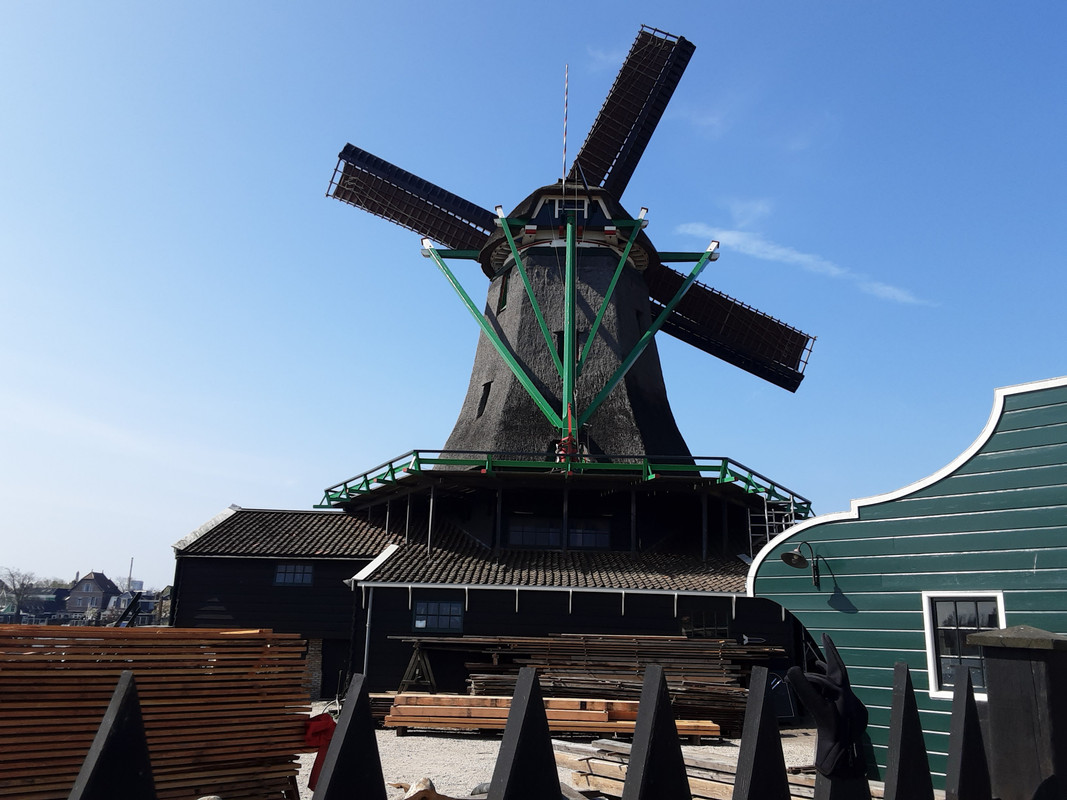New Mars Forums
You are not logged in.
- Topics: Active | Unanswered
Announcement
#101 Yesterday 14:08:06
- Calliban
- Member
- From: Northern England, UK
- Registered: 2019-08-18
- Posts: 4,136
Re: Oil, Peak Oil, etc.
This is a picture of a wind powered sawmill that I visited on my holiday in Holland.
It uses no copper at all, no aluminium, no rare earths and only small amounts of iron for high stress components. It is mostly made from wood. There is no energy storage, aside from the kinetic energy stored within the sails and other rotating components. There is no backup power. The whole thing is really very simple. It is hundreds of years old and has been sawing wood for all of that time.
I think there is a lesson here in how we can sustainably use renewable energy. If we need tonnes of copper and other rare elements per MW of power, then we are clearly overcomplicating things. When you use wind and other renewables for electricity production and then add things like transmission, storage, frequency control and backup power, the costs and resource comittments rapidly become untenable. But in previous times, people relied upon renewable energy without doing anything as crazy as what we are trying to do today. They used the power at its source. They avoided unnecessary energy transitions. And they varied work rate with the weather. It wouldn't have occured to them to even try and store wind energy and it wouldn't have possible even if it had occured to them.
I think this raises serious questions and deserves serious thought. We have built a civilisation on the principle of converting chemical energy into rotary motion. How much of what we need as a society could we adapt to make use of the rotary motion provided by direct mechanical wind power?
Last edited by Calliban (Yesterday 14:25:40)
"Plan and prepare for every possibility, and you will never act. It is nobler to have courage as we stumble into half the things we fear than to analyse every possible obstacle and begin nothing. Great things are achieved by embracing great dangers."
Offline
Like button can go here
#102 Yesterday 14:21:24
- offtherock
- Member
- Registered: 2017-10-26
- Posts: 12
Re: Oil, Peak Oil, etc.
Or do both.
Go for massive pv but also simpler solutions like this and solar thermal and then fission as well.
Offline
Like button can go here
#103 Yesterday 14:48:22
- Calliban
- Member
- From: Northern England, UK
- Registered: 2019-08-18
- Posts: 4,136
Re: Oil, Peak Oil, etc.
I have great doubts about the sustainability of PV as a bulk energy source. A lot of people are emotionally attached to it because it seems to them to be an elegant solution - harnessing the power of the sun with no moving parts. But the materials requirements are huge, as is the embodied energy needed to produce all of the equipment required. On top of this, it is a technologically difficult product to produce and relies on long supply chains for all of the material inputs and equipment. PV modules are relatively cheap at present, only because the Chinese are producing them at massive scale, using stranded coal and forced labour. How long can all of the things that make it possible hold together? There are just too many things that can go wrong with PV supply chain for it to make any sense pinning our future on it. It is extremely precarious and resource intensive. People advocate it more for emotional than practical reasons. That is about as stupid as it is possible to be when dealing with something as vital to life as energy supply. We need systems that we can sustain using limited resources that are as close to home as possible.
Last edited by Calliban (Yesterday 14:51:16)
"Plan and prepare for every possibility, and you will never act. It is nobler to have courage as we stumble into half the things we fear than to analyse every possible obstacle and begin nothing. Great things are achieved by embracing great dangers."
Offline
Like button can go here